
Stakeholders Visit to Italy
As part of the Europe to Turkey on Foot project funded by the Civil Society Dialogue program a group of 8 representatives from the Culture Routes Society and its associates visited the Via Francigena between 23.05.2016-28.05.2016. The participants were Kate CLOW and Hüseyin ERYURT (CULTURE ROUTES SOCIETY), Ensar MACİT and Önder KILIÇ (İNEGÖL MUNICIPALITY – EVLİYA ÇELEBİ WAY), Süleyman ATEŞ and İbrahim AĞARTAN (EĞİRDİR MUNICIPALITY – ST PAUL TRAIL), Yusuf ÜLKER and Barış YÜKSEL (DEMRE MUNICIPALITY – LYCIAN WAY).
‘STAKEHOLDERS’ VISIT TO ITALY’ activity aimed at demonstrating advantages and infrastructure of a cross border cultural route. Two representatives from the Culture Routes Society and representatives from each associate municipality of the Europe to Turkey on Foot Project attended this visit as well as two accommodation owners from the trails in Turkey which are the subjects of this project. The attached program of the activity was prepared by the project partner organization, European Association of Via Francigena (EAVF) and shows the places visited by participants.![]()
The group arrived in Milan on 23.05.2016 and was welcomed by Sloways, which is the main private tourism agency associate member of the EAVF. Having visited the big tourism attractions of Milan, they then went to Pavia where they had dinner with Silvia Lecci, the Italian Project coordinator who gave a brief information on the following days’ program and their recent activities within the VF festival program.
The next day started early in the morning with a visit to Pavia municipality tourism office, where the local councillor gave a short speech on the history of Pavia as well as their cooperation with the EAVF. The tourism office was an important information centre for all kind of visitors particularly trekkers on the Via Francigena. It had all the information material for the route including maps, accommodation lists, brochures about points of interest, etc. and some merchandising as well. The group was then accompanied by a tour guide who showed them all the characteristic buildings of this Medieval town and one example of low-cost accommodation for trekkers.
Following the lunch, the group attended a three-hour workshop with the provincial government of Pavia where they also had the chance to meet the president of EAVF Massimo Tedeschi, who gave a brief information on the establishment of the route and their organization. During the workshop, Emanuela Marchiafava, the councillor for tourism in the province of Pavia introduced their services along the route. Representatives of local businesses and volunteer organizations operating in the Pavia province were also present at the meeting and they made presentations to the participants. The Turkish visitors participated actively throughout the workshop, which was an example of the transfer of good practice and explanation of methodology.
On May 25th the group left Pavia and went to Orio Litta where they met the mayor and visited a local hostel, once a farmhouse, which had been restored to serve trekkers of the Via Francigena. They also had the chance to visit a cheese factory and see production of the special Grana Padano cheese, an important local gastronomic product. After lunch at a local restaurant in Corte San Andrea, some local association representatives accompanied the group around this small town and gave information on their visitor numbers and showed a small hostel with dormitories which again provides accommodation for the Via Francigena visitors. The visit program continued with a boat transfer over the river Po, which marks the border between the two regions of Italy: Lombardy and Emiglia Romana. At the end of the day, the group arrived in Piacenza where the headquarters of the EAVF are located and had a short meeting with the councillor who gave brief information on their activities and events along the Via Francigena.
On May 26th, there was an internal meeting with the EAVF staff in the Fidenza municipality building and then a visit to the local tourism office. Here the staff informed the group about their merchandising, information services for visitors and methods of monitoring the pilgrim profile along the route. In the afternoon, the group visited the main cathedral and local food market; some took an energetic walk on the Via Francigena through local villages.
The last day of the visit started with a transfer to Berceto, where the stakeholders had the chance to meet the mayor and get information on this very peculiar small village, which is a member of the EAVF and a receipient of EU grant funds for restoration projects. Around lunchtime, they visited two very characteristic accommodation places. These buildings once served as the road construction workers’ houses and then were converted into hostels. Nearby is the Cisa Pass, where there is also a symbolic gate of the Via Francigena from Emiglia Romana to Tuscany. In the afternoon, a local guide led the group on a walk on the Via Francigena in Tuscany region for c.2 km; they saw high-quality waymarks and signposts along the ancient cobbled route. The local guide continued accompanying the tour in the afternoon to the town of Pontremoli and informed them about the local organisation’s maintanence works on the route as well as the ancient castle of Piagnaro, where there is also accommodation and a museum.
Silvia Lecci organised the activities, made the introductions and accompanied the group throughout. Translation was by Silvia and Hüseyin Eryurt, and the group were able to ask questions and communicate effectively with their hosts.
In conclusion this 5-day visit was quite useful for the stakeholders of the project to see how the EAVF organizational structure is formed and how local and regional governing bodies taking active part in sustainable tourism in their regions. They saw excellent examples of accommodation and other services provided to the walkers and took away samples of leaflets, maps and other merchandising. It gave various ideas to the participants for the next activities, particularly local leader and municipality planning, where, with their colleagues, they will organise similar services in their areas.
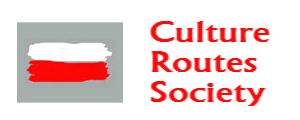
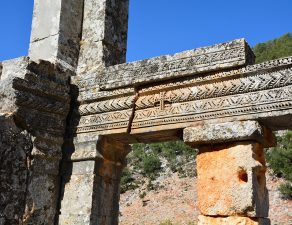

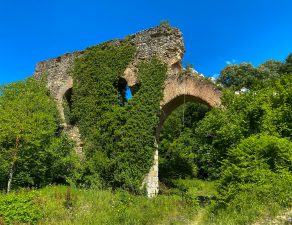


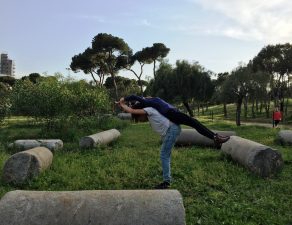

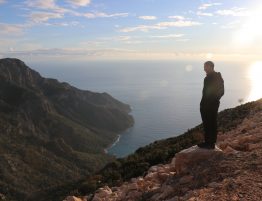
Write a comment: